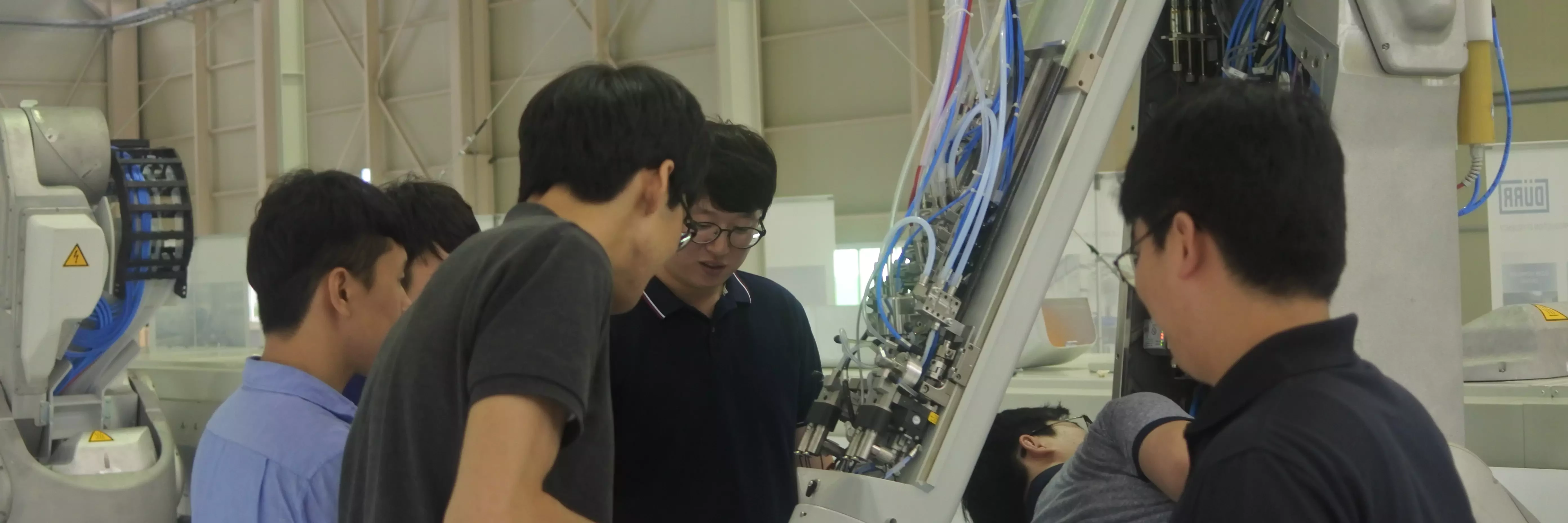Dürr has been serving the Korean automotive industry for decades. Every year, South Korea builds around 4.2 million vehicles. In addition to the seven factories operated by Hyundai in the immediate vicinity of the new service center in Ulsan, other Korean customers such as Kia and GM Korea, which have locations throughout the country, will also profit from the greatly enhanced support services offered by the new Dürr service and training center.
The Dürr Korea Inc. national subsidiary employs approximately 170 members of staff. “Our goal is to improve the production efficiency of our customers throughout the entire lifecycle of their plants,” affirmed Ralf W. Dieter, Chairman of Dürr AG, during the inaugural ceremony. “The service center in Ulsan establishes an important local basis to meet this goal for our Korean customers.”
The Ulsan Service Center by Dürr is approximately 2000 m2 and the home of four areas: service, replacement parts, training, and precommissioning. Total investment in the facility is 4,3 Milliion Euro (5,440 Million Korea won). Local service teams that operate out of the center in South Korea work to provide customers with support and engineering services, while the replacement parts warehouse encompasses a broad range of products and covers the plants that Dürr installed in previous years. This, in turn, makes it possible to offer an emergency service program, whereby customers anywhere in the country can take receipt of replacement parts just one day after placing the order.
On display in the training center is the current generation of painting robots, which are incorporated in individual customer training seminars. The Dürr trainer team offers detailed insight into the technology such as that of the EcoRP family of robots. The seminars are tailored to meet the specific needs of the participants, which is why the training robots are outfitted with appropriate application products such as different atomizers for interior or exterior painting. The training units for theory and practice are designed to minimize application malfunctions, thereby greatly increasing the availability of the plants. Maintenance times are then by default reduced as malfunctions are detected and rectified more quickly.

